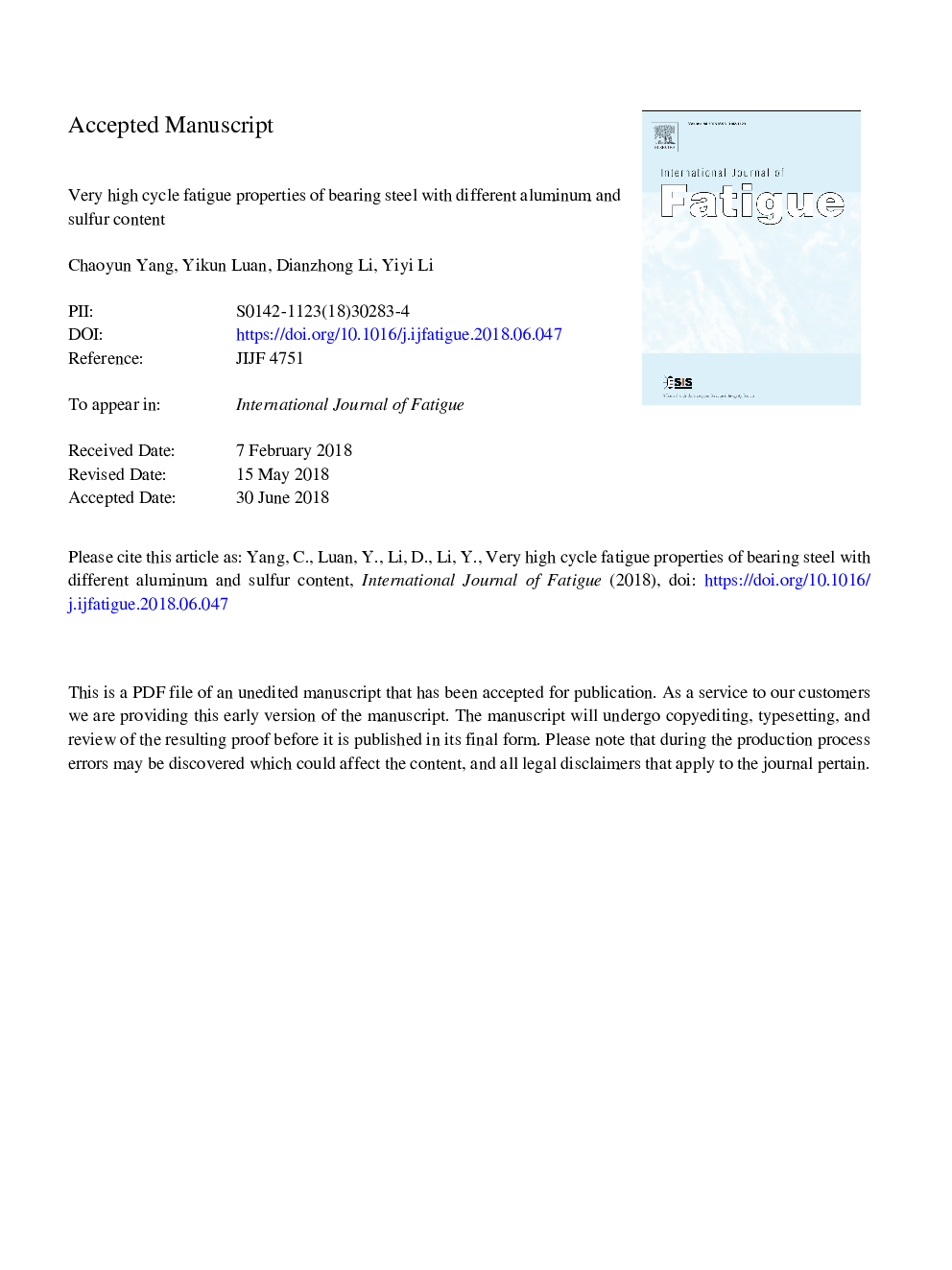| Article ID | Journal | Published Year | Pages | File Type |
|---|---|---|---|---|
| 7171286 | International Journal of Fatigue | 2018 | 31 Pages |
Abstract
This study aims to clarify the effects of aluminum and sulfur content on fatigue property together with corresponding crack initiation and propagation behavior of bearing steel in the very high cycle fatigue (VHCF) regime. For these purposes, ultrasonic tensile-compression fatigue tests were carried out on fatigue specimens with different directions extracted from bearing steel bars containing different aluminum and sulfur content. As a result, high aluminum content in bearing steel leads to worse fatigue property by forming a large collection area of Al2O3 particles. MnS inclusions can cause fatigue failure of low sulfur bearing steel at the 45-degree angle and contribute to fatigue anisotropy. However, there are no MnS inclusions to be found at crack initiation region of failed specimens with ultralow sulfur content. For the VHCF fracture of bearing steel, fracture surface can be simply divided into four different areas according to crack propagation path except fatigue source. The stress intensity factor at the periphery of fine granular area (FGA) ÎKFGA can be regarded as the critical driving force for crack propagating through martensite laths. In addition, crack initiation and propagation are the result of mutual coordination and matching of the driving force ÎK, crack propagation speed and microstructure. Dislocations and precipitated carbides play an important role in the formation of FGA by helping form the corresponding nanoscale grain boundary.
Keywords
Related Topics
Physical Sciences and Engineering
Engineering
Mechanical Engineering
Authors
Chaoyun Yang, Yikun Luan, Dianzhong Li, Yiyi Li,
